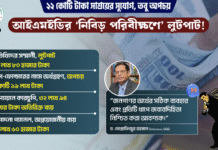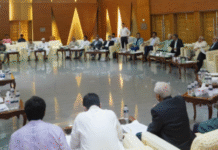A major heat wave is likely to sweep across Bangladesh, northern India and eastern Pakistan from next week
Meteorologists predict that monsoon this year is likely to be different and the ongoing dry weather may get extreme and prolonged as an impact of the expected upcoming El Niño.
A major heat wave is likely to sweep across Bangladesh, northern India and eastern Pakistan from next week as an area of high pressure causes plenty of sunshine and a dry northwest wind, according to a report of the AccuWeather published yesterday.
The report at accuweather.com says the persisting heat is a little early but not unheard of for this time of year. The hottest weather in the subcontinent often occurs before the onset of frequent rains during monsoon.
“We assume that rainfall will be less in the upcoming monsoon,” Shah Alam, director of the Bangladesh Meteorological Department, yesterday told the Dhaka Tribune.
AccuWeather Meteorologist Eric Wanenchak says in the report: “If the monsoon rain is less, it would be a disaster for agriculture.”
The June-August period is usually counted as monsoon in Bangladesh and an average of 523mm, 420mm and 318mm rainfall occurs in these months.
Shah Alam said the rainy season might experience less rainfall on which farmers heavily depend for T-Aman crops.
AccuWeather’s Senior Meteorologist Jason Nicholls says: “The monsoon may start on time or even slightly early, but rainfall during the monsoon season may be less than normal and more sporadic, especially in the north.”
The impact of El Niño will prompt extreme and prolonged drought with thunderstorms on the area, he adds.
Bangladesh is at higher risk of droughts. Between 1949 and 1991, droughts occurred here 24 times. Very severe droughts hit the country in 1951, 1957, 1958, 1961, 1972, 1975, 1979, 1981, 1982, 1984 and 1989.
Past droughts typically affected about 47% area of the country and 53% of the population, according to the Department of Disaster Management.
The average rainfall in April in Bangladesh is 130.2mm, but this year the country has experienced very little rain. The Met office says the temperature across the country is getting higher in the absence of the expected rainfall.
On April 24, Dhaka city experienced the highest temperature in 54 years as mercury reached 40.2 degrees Celsius.
The previous highest temperature in the capital was recorded 42.3 degrees on April 30, 1960, according to the Met office.
The highest temperature in the country in the past 10 years was recorded 43.2 degrees Celsius in Jessore in 2009; the highest temperature recorded in the country’s history was 45.1 degrees on May 18, 1972.
However, the rising trend of temperature was paused last Friday evening when light drizzling occurred at different parts of the country, including the capital.
Source: Dhaka Tribune










